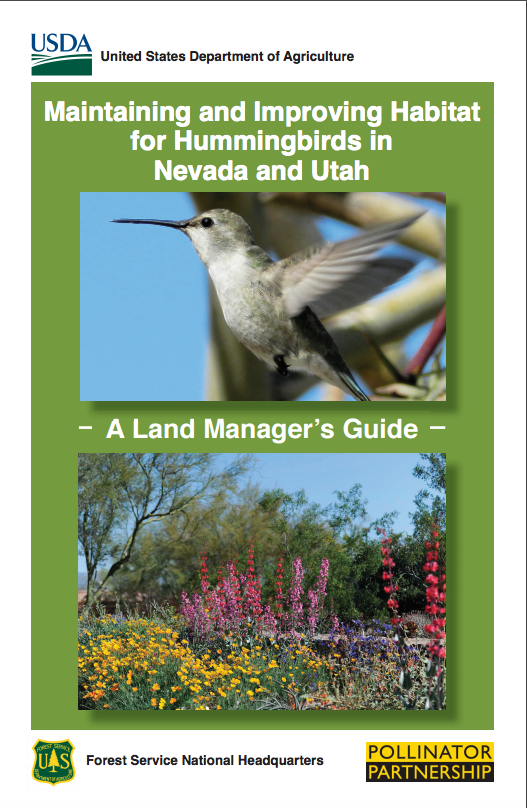
Western Hummingbird Partnership Logo
|
WHP Executive Committee
Universidad Nacional Autónoma de México
Environment for the Americas
Barb Bresson
Avian Conservation Program
USFS, Pacific Northwest Region
Migratory Species Coordinator
USFS, International Programs
Sarahy Contreras
Professor
Universidad de Guadalajara
Director, Emerging Programs and Partnerships Group
Point Blue Conservation Science
Regional Wildlife Ecologist
USFS, Pacific Southwest Region
USFS Committee
Cheryl Carrothers
USFS, Alaska Region
Barb Bresson
Avian Conservation Program
USFS, Pacific Northwest Region
|
|
|
|
|
Western Hummingbird Partnership
Western Hummingbird Partnership (WHP) is a collaborative approach to hummingbird research, conservation, and education. Working with partners in Canada, the United States, and Mexico, WHP strives to understand what hummingbirds need to survive in a changing world. Our newsletter will keep you up-to-date on the latest in hummingbird news. Thank you for joining us!
|
Keep up with the latest in hummingbird news via Facebook or the WHP newsletter. Both are provided in English and Spanish. Find the Spanish version on our website:
Spanish Newsletter
|
|
The WHP small grants program supports research, monitoring, and education programs that benefit the conservation of western migratory hummingbirds.
WHP 2016 Call for Proposals
The Western Hummingbird Partnership works to build an effective and sustainable hummingbird conservation program through research, monitoring, habitat restoration and enhancement, and education. WHP has limited funding, with most projects in the $1,000 - $5,000 range, for activities that will benefit knowledge of hummingbird populations and their conservation and public awareness of hummingbirds, especially migratory species with ranges in western Canada, the United States, and Mexico. Proposals are due March 15, 2016 at 11:59 p.m. your time.
Examples of projects of interest include those that explore climate change impacts on hummingbirds, examine the habitat requirements of migratory hummingbird species, promote habitat restoration, and/or demonstrate successful methods of engaging the public in hummingbird conservation, education and citizen science. Research proposals should demonstrate a clear nexus to the conservation of western migratory hummingbirds.
|
|
Guides Improve Habitat for Hummingbirds
 As spring approaches, land managers, landscapers, and gardeners are considering the best plants for their sites. The U.S. Forest Service has developed a series of guides that help improve habitat for hummingbirds.
Available digitally, each guide focuses on a state or region in the western United States. One of the handiest aspects of the guides are the tables of native hummingbird nectar plants, the dates during which they bloom, and water and sunlight requirements. Information about the common hummingbirds of each region is also included.
The booklets are intended to help guide restoration and gardening projects and motivate people to address the needs of hummingbirds on large acreages, small areas, utility corridors, field edges, and even roadsides to provide important connections for hummingbirds.
|
|
Hummingbirds Forever!
 Mountain meadows in the western U.S. come alive in spring and summer. The reds of paintbrush and vivid purples of lupine brighten the landscape. Not only are these flowering plants attractive to the human eye, they are also alluring to migratory and breeding hummingbirds. Mountain meadows in the western U.S. come alive in spring and summer. The reds of paintbrush and vivid purples of lupine brighten the landscape. Not only are these flowering plants attractive to the human eye, they are also alluring to migratory and breeding hummingbirds.
In 2015 with support from the Western Hummingbird Partnership, Rocky Mountain Elk Foundation, and volunteers, the McKenzie River Ranger District studied the success of restoration activities in five meadows. Volunteers gathered to survey flowering plants and hummingbirds throughout the summer. Programs about pollinators were offered at local schools, and information booths were hosted at events.
The project's first year provided some baseline data on the species of flowering plants that were found in restored meadows. Subsequent surveys will help to determine the how prescribed burns and revegetation activities benefit hummingbirds and other pollinators.
The full report of the project's activities are available on the WHP website.
|
|
WHP Website in Spanish
The Western Hummingbird Partnership website is now available in Spanish. Visit the site and explore the pages!
|
|
|
|
|